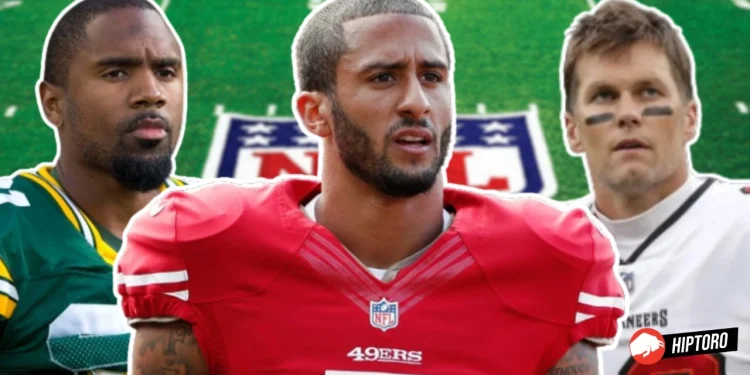The National Football League (NFL) has captivated millions with its high-stakes games and exhilarating plays. However, like any competitive sport, it’s also faced controversies that transcend the field and permeate society.
Some of these disputes involve questionable officiating decisions, ethical dilemmas, or rule violations, while others underscore broader societal issues such as racism, domestic violence, and player safety. These incidents have shaped the league’s history, sparking debates among fans, analysts, and policymakers alike.
Here, we explore the top 10 most controversial moments in the NFL’s storied past, providing insights into the challenges and complexities that define America’s favorite sport.
The NFL has seen its fair share of unforgettable and controversial moments over the years. As one of the most-watched sports leagues in the world, the NFL inevitably draws immense scrutiny, with the high stakes of each game amplifying the drama.
Here, we’ll delve into the top 10 most controversial moments in the NFL’s storied history. Some of these events highlight contentious refereeing decisions, while others underscore ethical, cultural, or legal issues that transcended the playing field. Each of these moments left a significant mark on the league, sparking intense debates among fans, analysts, and the broader public.
1. The Immaculate Reception (1972)
The “Immaculate Reception” stands as one of the most iconic and debated moments in NFL history. On December 23, 1972, the Pittsburgh Steelers and the Oakland Raiders were locked in a tight AFC Divisional playoff game. With just 22 seconds left on the clock and the Raiders leading 7-6, the Steelers were facing a 4th-and-10 from their 40-yard line. Quarterback Terry Bradshaw desperately heaved the ball downfield under intense pressure, targeting running back John “Frenchy” Fuqua. The ball, however, ricocheted off Raiders safety Jack Tatum and seemingly careened towards the ground.

Seemingly out of nowhere, Steelers fullback Franco Harris appeared, catching the deflected ball just inches above the ground and sprinting into the end zone for the game-winning touchdown. The play was immediately dubbed the “Immaculate Reception,” symbolizing a miraculous occurrence that defied explanation. Fans erupted in pandemonium, and the Steelers clinched a 13-7 victory, securing their first-ever playoff win.
In recognition of its lasting impact, the play has been memorialized in numerous ways. The Pro Football Hall of Fame recognizes it as the greatest play in NFL history, while a statue of Franco Harris commemorating the event stands at Pittsburgh International Airport. The term “Immaculate Reception” has also entered the broader cultural lexicon, often used metaphorically to describe a highly improbable yet fortuitous outcome. Ultimately, the play embodies the unpredictability and drama that makes football so compelling, even if the debate over its legitimacy may never be settled.
2. The Tuck Rule Game (2001)
The “Tuck Rule Game” remains one of the most controversial games in NFL history, taking place on January 19, 2002, during the AFC Divisional Playoff between the New England Patriots and the Oakland Raiders. The game was played under heavy snowfall in Foxborough, Massachusetts, with the field covered in a thick layer of snow, which added to the drama.

With less than two minutes left and the Raiders leading 13-10, Patriots quarterback Tom Brady dropped back to pass but was hit by Raiders cornerback Charles Woodson, causing the ball to come loose. Oakland recovered the ball, seemingly securing the win. However, the referees invoked the rarely applied “tuck rule” upon review, determining that Brady was in the process of “tucking” the ball back into his body after starting to throw it forward. According to the rule, the play was ruled an incomplete pass rather than a fumble, giving the Patriots another chance to score.
In 2013, the NFL finally eliminated the tuck rule, stating that any player who loses control of the ball after starting a forward passing motion will now be ruled to have fumbled. The decision acknowledged the confusion and inconsistency that the rule had caused for more than a decade. Despite this change, the “Tuck Rule Game” remains etched in NFL lore as an example of how a single rule interpretation can alter the course of history.
Beyond the controversy, this game showcased the Patriots’ resilience and adaptability under pressure, qualities that would come to define their dynasty. Brady emerged as a clutch performer, and Vinatieri’s kicks were hailed as two of the greatest field goals in NFL history. For the Raiders, the loss marked a significant missed opportunity, and their fans still lament how a different ruling might have changed the trajectory of the franchise.
3. Colin Kaepernick’s National Anthem Protest (2016)
Colin Kaepernick, a former quarterback for the San Francisco 49ers, sparked a national conversation in 2016 when he chose to kneel during the national anthem before a preseason game. His gesture was meant as a protest against police brutality and racial injustice in the United States, following a string of high-profile police shootings of unarmed Black men. Kaepernick initially sat on the bench during the anthem but began kneeling after consulting with a military veteran, who suggested that kneeling would still show respect while conveying his message.
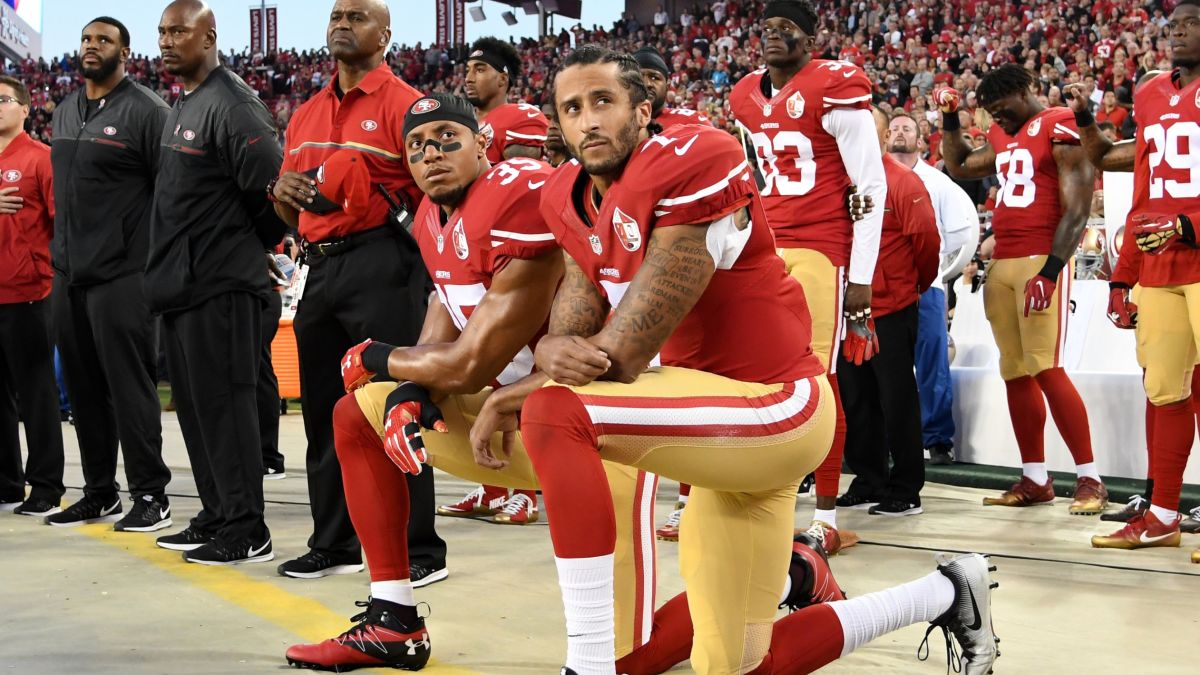
The decision to kneel polarized the nation and the NFL fan base. Supporters lauded Kaepernick for bringing attention to systemic racism, comparing his protest to previous acts of civil disobedience by athletes like Muhammad Ali and John Carlos. Critics, however, argued that his actions disrespected the American flag and the military, leading to widespread backlash. Prominent political figures, including then-presidential candidate Donald Trump, condemned Kaepernick, further intensifying the controversy.
The controversy fundamentally changed the NFL’s relationship with social issues, forcing the league to re-evaluate its stance on player protests. In 2018, the NFL implemented a policy requiring players to stand for the anthem or stay in the locker room if they chose not to participate. This policy was criticized as stifling free speech and was later put on hold due to pushback from the players’ union.
In the years following Kaepernick’s protest, the league has made efforts to support social justice initiatives, committing significant funding to programs aimed at reducing racial disparities. While Kaepernick remains unsigned, his legacy as a pioneer for athlete activism endures, and the conversation he sparked continues to shape how the NFL and other sports organizations approach these complex issues.
4. Deflategate (2015)
“Deflategate” refers to the controversy that erupted following the 2015 AFC Championship game between the New England Patriots and the Indianapolis Colts. The Patriots, led by quarterback Tom Brady, were accused of using under-inflated footballs to gain an advantage in adverse weather conditions. The allegations arose after Colts linebacker D’Qwell Jackson intercepted a pass and brought it to the sideline, where team staff noticed the ball felt under-inflated. The NFL quickly launched an investigation.

The controversy centered around the league’s rules, which state that game balls must be inflated to a pressure between 12.5 and 13.5 PSI. The Patriots’ footballs were found to be below this range, leading to suspicions that they had been deliberately tampered with. Many argued that under-inflating footballs would make them easier to grip, especially in cold and wet conditions, providing an unfair advantage to the quarterback and receivers.
Despite the Patriots’ eventual triumph, the “Deflategate” scandal left lasting scars on Brady’s reputation. Critics viewed it as a blemish on his legacy, while supporters saw it as a testament to his resilience in the face of adversity. The controversy also raised questions about the NFL’s disciplinary process, as many saw the investigation and subsequent punishment as flawed or inconsistent.
The saga underscored the high stakes involved in professional sports, where even a seemingly minor rule violation can lead to national headlines. “Deflategate” serves as a reminder of the scrutiny that accompanies any success at the top levels of competition and the polarized nature of fandom that colors perceptions of fair play.
5. BountyGate (2012)
“BountyGate” was a major scandal that shook the NFL in 2012, involving the New Orleans Saints and a pay-for-performance system orchestrated by defensive coordinator Gregg Williams. The NFL discovered that Williams had implemented a bounty program during his tenure with the team, incentivizing players to intentionally injure opposing stars. This practice, conducted from 2009 to 2011, rewarded players with cash bonuses for “cart-offs” (forcing an opponent to be taken out of the game) and “knockouts” (taking them out for multiple plays).

The Saints’ bounty program came to light after a lengthy investigation by the league. Several sources, including former players and team staff, provided evidence of Williams’ involvement and head coach Sean Payton’s awareness of the scheme. According to the NFL, between 22 and 27 players participated, with linebacker Jonathan Vilma reportedly offering $10,000 to anyone who could knock Brett Favre out of the 2010 NFC Championship game.
“BountyGate” fundamentally changed how teams and the league approached player safety. The NFL introduced more stringent monitoring of teams’ internal conduct and expanded efforts to educate players and coaches on the ethical aspects of competition. Although the scandal’s aftermath cast a shadow over the Saints’ Super Bowl XLIV victory, the franchise eventually recovered under Payton’s leadership, rebuilding their reputation and returning to playoff contention.
The scandal highlighted the fine line between playing hard and playing dirty and showed the league’s determination to stamp out unsportsmanlike conduct. It also reignited discussions about how teams motivate players and maintain competitive integrity in a physically demanding sport.
6. Ray Rice Domestic Violence Incident (2014)
In 2014, the NFL faced one of its most significant public relations crises when Baltimore Ravens running back Ray Rice was caught on video assaulting his fiancée, Janay Palmer, in an elevator. The incident occurred in February at the Revel Casino Hotel in Atlantic City, New Jersey, where Rice was seen dragging an unconscious Palmer out of the elevator. The footage quickly went viral, leading to widespread condemnation and calls for accountability.

Initially, Rice was charged with third-degree aggravated assault, which could have resulted in three to five years in prison. However, he was allowed to enter a pretrial intervention program that spared him jail time, instead requiring counseling and probation. The NFL initially imposed a two-game suspension on Rice for violating the league’s personal conduct policy, a decision that was met with heavy criticism for being too lenient.
The backlash intensified in September 2014 when TMZ released an extended video showing the full assault inside the elevator. In this disturbing footage, Rice was seen striking Palmer, causing her to lose consciousness. This video reignited public outrage and forced the NFL to take swift action. Commissioner Roger Goodell extended Rice’s suspension indefinitely, and the Ravens immediately terminated his contract.
For Ray Rice, the consequences were severe. Despite winning an appeal to overturn his indefinite suspension, he was not signed by any NFL team after the incident, effectively ending his career. Rice later focused on advocating against domestic violence, speaking publicly about the incident and its impact on his life.
Ultimately, the incident exposed a need for systemic change in how professional sports handle domestic violence cases. It also underscored the importance of swift and decisive action to protect victims and ensure that offenders are held accountable, both in sports and in society at large.
7. Spygate (2007)
In 2007, the New England Patriots were embroiled in a scandal known as “Spygate,” which centered around their alleged illegal videotaping of opposing teams’ signals. The controversy erupted during a regular-season game against the New York Jets when a Patriots video assistant was caught filming the Jets’ defensive coaches from the sideline. Jets head coach Eric Mangini, a former Patriots assistant, reported the activity to the NFL, leading to an investigation.
/origin-imgresizer.eurosport.com/2007/09/06/383389-23727559-2560-1440.jpg)
The NFL discovered that the Patriots had been filming opposing coaches’ signals from unauthorized areas since 2000. Such videotaping was not explicitly prohibited until 2006, when the NFL clarified that teams could not record opponents’ signals for strategic purposes from the sidelines or other off-limits locations. Although some argued that other teams had also engaged in similar practices, the Patriots were considered to have repeatedly violated the league’s directives.
Commissioner Roger Goodell swiftly penalized the Patriots and head coach Bill Belichick. Belichick received a $500,000 fine, the largest penalty ever imposed on a coach, while the team was fined $250,000 and forfeited a first-round draft pick in the 2008 draft. The penalties were intended to send a strong message about maintaining competitive integrity, though some critics argued they were not severe enough.
The legacy of “Spygate” has remained contentious. It changed how the league monitors teams’ sideline conduct, leading to tighter security protocols and more rigorous enforcement of rules regarding information gathering. However, it also fueled speculation and conspiracy theories about the Patriots’ successes, overshadowing their achievements and contributing to the polarizing public perception of the franchise.
Ultimately, “Spygate” serves as a reminder of the fine line between competitive innovation and rule-breaking, reinforcing the importance of transparency and trust in a league driven by intense rivalries and high-stakes competition.
8. The 1987 Players’ Strike
The 1987 NFL Players’ Strike was a defining moment in the history of labor relations in American sports. It was the third work stoppage in NFL history and highlighted the long-standing tensions between the league and its players over salaries, benefits, and free agency rights. On September 22, 1987, after the season’s second week, the NFL Players Association (NFLPA) went on strike, demanding better compensation and the introduction of a true free agency system.

The NFL owners, prepared for the strike, fielded replacement players drawn from various sources, including former college players, those who had been cut from NFL rosters, and others who hadn’t played professionally for some time. The league decided to proceed with the season, reducing the schedule to a 15-game campaign and using these replacement players for the next three weeks. The games became known as the “Replacement Games,” with varying levels of quality that often left fans disappointed.
The replacement players, or “scabs,” faced significant pressure. Many crossed picket lines to pursue their dreams of playing in the NFL, but doing so often strained relationships with striking players. Some star players also chose to cross the lines, weakening the union’s resolve and further complicating the labor situation.
Overall, the 1987 Players’ Strike was a pivotal event that shaped modern labor relations in the NFL. It exposed the complexities and challenges of balancing the interests of players and owners while ensuring that the game remains competitive and profitable. The lessons learned from this strike continue to influence negotiations between the league and the players’ union.
9. Super Bowl XL (2006) Officiating
Super Bowl XL, held on February 5, 2006, between the Seattle Seahawks and the Pittsburgh Steelers, is often remembered as one of the most controversial championship games due to the officiating decisions that marred the event. The Steelers won 21-10, securing their fifth Super Bowl title, but the game was overshadowed by several disputed calls that many believed unfairly favored Pittsburgh.
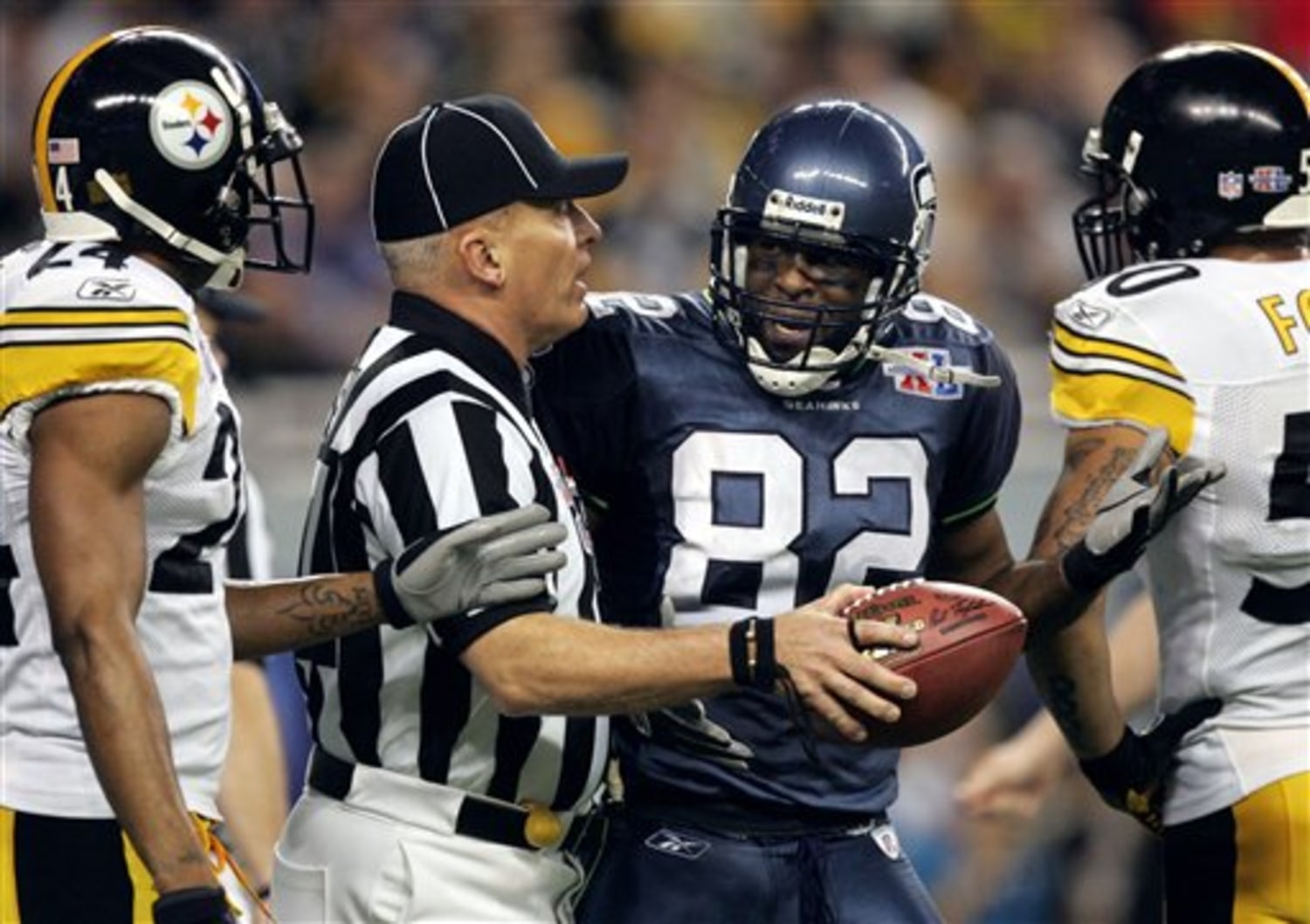
Seattle took an early lead with a field goal, but the momentum shifted when an apparent touchdown catch by receiver Darrell Jackson was nullified due to an offensive pass interference penalty. Critics argued that the penalty was excessively harsh, as Jackson appeared to make only minimal contact with a Steelers defender. This call forced the Seahawks to settle for a field goal instead of a potential seven points.
Another critical moment occurred when Seahawks quarterback Matt Hasselbeck connected with tight end Jerramy Stevens on a long pass that would have set up a first-and-goal at the Pittsburgh one-yard line. However, a holding penalty on offensive lineman Sean Locklear negated the play and pushed Seattle back 10 yards. The Seahawks then missed a subsequent field goal attempt.
The NFL defended the officiating crew, but the controversy led to calls for improved training and evaluation of referees, particularly for high-stakes games like the Super Bowl. The league also faced pressure to clarify its rules and interpretations, especially regarding holding and pass interference penalties.
Super Bowl XL serves as a cautionary tale about the importance of consistent and transparent officiating, especially in an era where high-definition broadcasts and instant replay have increased scrutiny on referees. Despite the controversy, the Steelers were able to celebrate a historic win for their franchise, while the Seahawks had to regroup and focus on future seasons.
10. O.J. Simpson Trial (1995)
Though not directly involving NFL gameplay, the O.J. Simpson trial stands as one of the most significant and controversial moments in the history of sports, casting a shadow over the NFL and American culture as a whole. Orenthal James Simpson, commonly known as “O.J.,” was a Hall of Fame running back who played for the Buffalo Bills and the San Francisco 49ers before embarking on a successful post-retirement career as a broadcaster and actor.
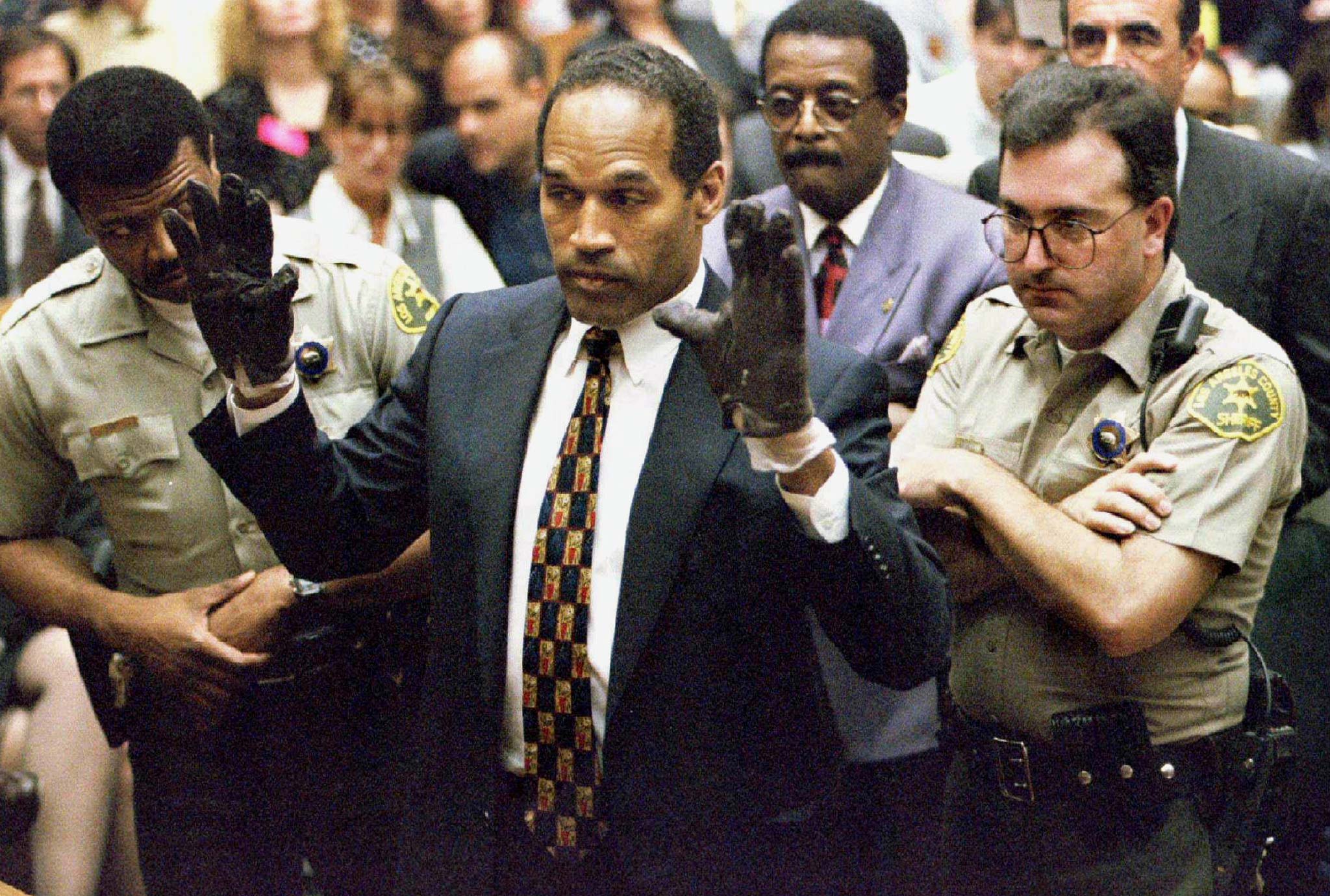
On June 12, 1994, Nicole Brown Simpson, O.J.’s ex-wife, and her friend Ronald Goldman were found brutally murdered outside her Los Angeles home. Simpson quickly became the prime suspect. On June 17, Simpson failed to surrender to the police, prompting a nationally televised low-speed chase in a white Ford Bronco driven by his friend Al Cowlings. This dramatic pursuit ended at Simpson’s home, where he finally surrendered.
The trial, which began in January 1995, captivated the nation and became known as the “Trial of the Century.” The prosecution presented a case that focused on Simpson’s history of domestic violence against Nicole and forensic evidence linking him to the crime scene. The defense team, led by Johnnie Cochran and including Robert Shapiro, F. Lee Bailey, and others, countered by casting doubt on the reliability of the evidence and suggesting that Simpson was the victim of systemic racism and police corruption. Cochran famously declared, “If it doesn’t fit, you must acquit,” referring to a glove found at the crime scene that Simpson appeared unable to wear during the trial.
The O.J. Simpson trial also led to a national conversation about race, celebrity, and justice in America. The extensive media coverage and sensational nature of the trial shaped how subsequent legal proceedings involving celebrities and athletes were perceived and covered. Ultimately, the Simpson saga remains one of the most significant cultural moments of the 1990s, serving as a reminder of the complexities that can arise when sports figures transcend the boundaries of their profession.
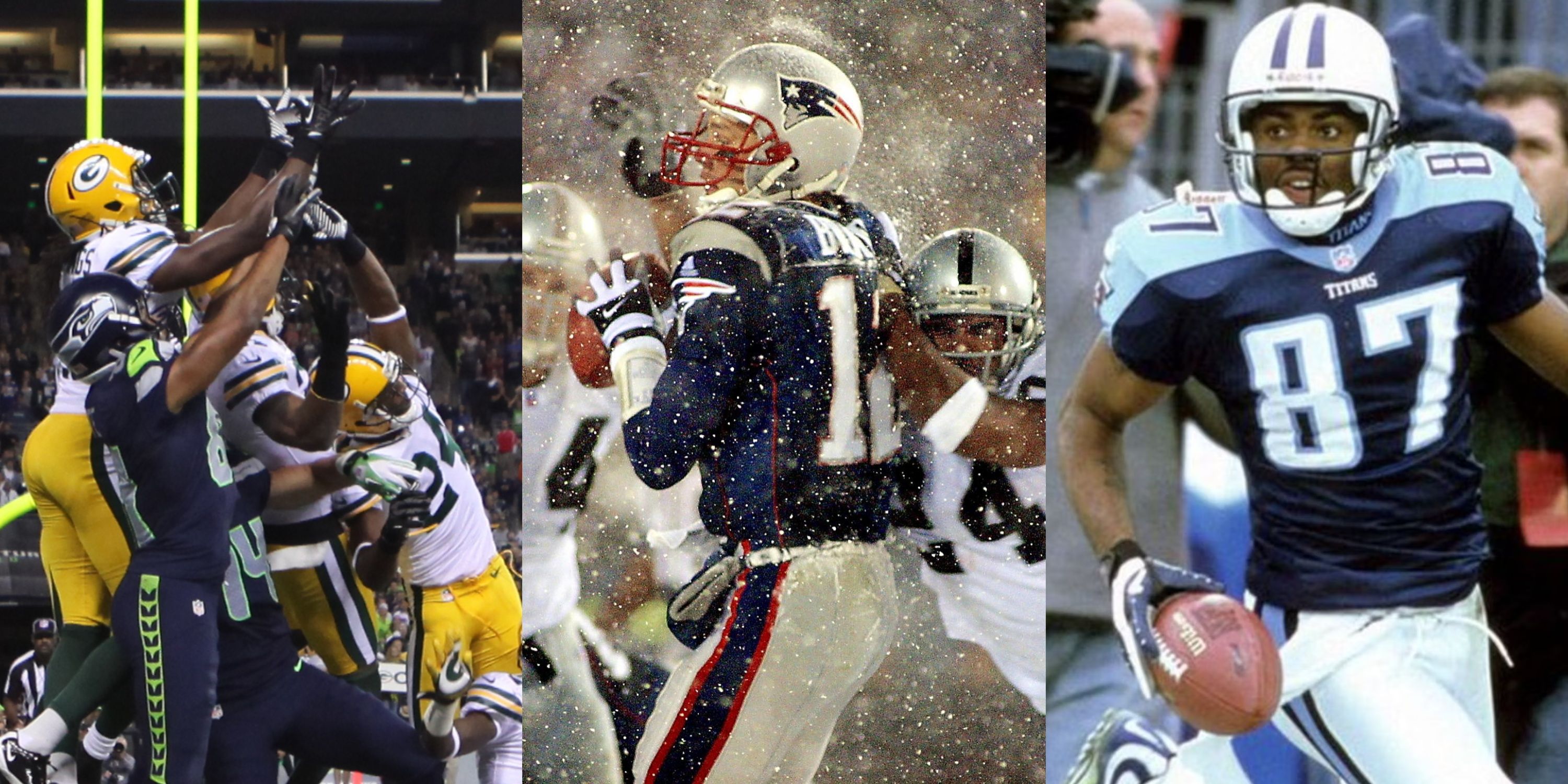 The controversies listed above have shaped the NFL’s legacy and reflected the league’s evolution. Some revealed ethical dilemmas and systemic flaws, while others underscored the intense rivalries and passion that drive professional sports. They collectively highlight the challenges of maintaining integrity and fairness in a multi-billion-dollar industry where competition, entertainment, and social issues often intersect. Despite the controversies, the NFL remains resilient, evolving its rules, policies, and culture to adapt to changing times and uphold its position as America’s premier sports league.
The controversies listed above have shaped the NFL’s legacy and reflected the league’s evolution. Some revealed ethical dilemmas and systemic flaws, while others underscored the intense rivalries and passion that drive professional sports. They collectively highlight the challenges of maintaining integrity and fairness in a multi-billion-dollar industry where competition, entertainment, and social issues often intersect. Despite the controversies, the NFL remains resilient, evolving its rules, policies, and culture to adapt to changing times and uphold its position as America’s premier sports league.


